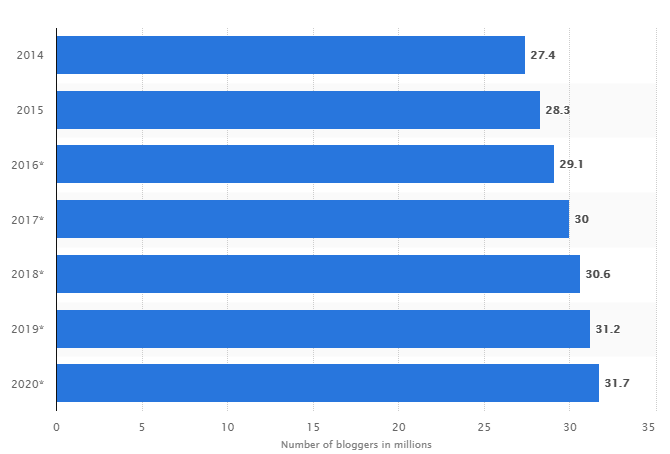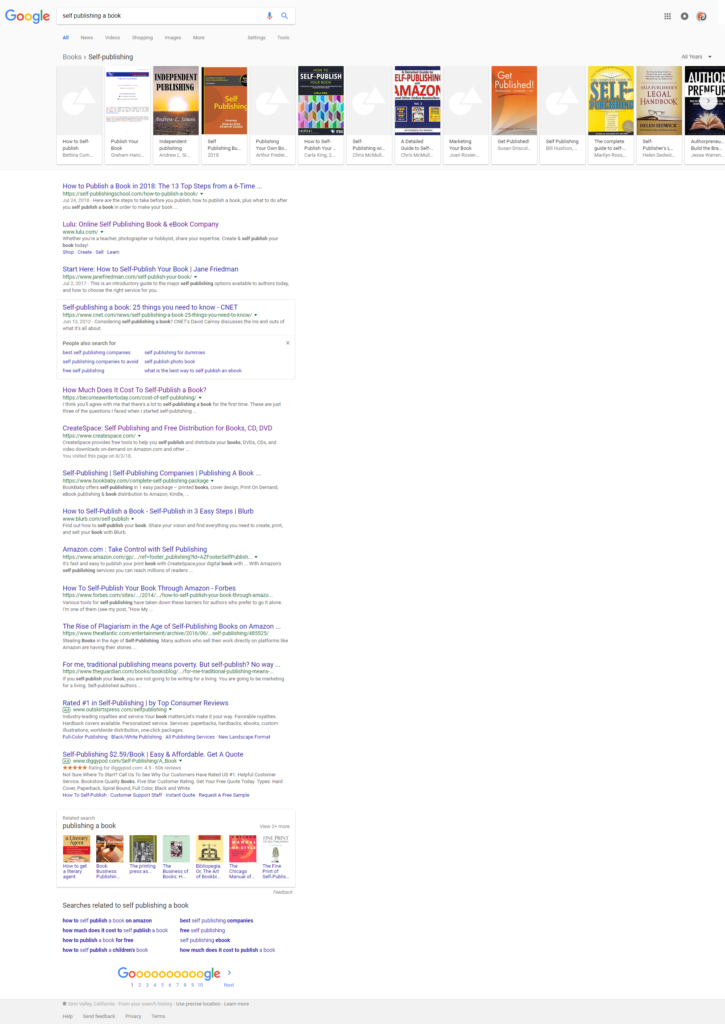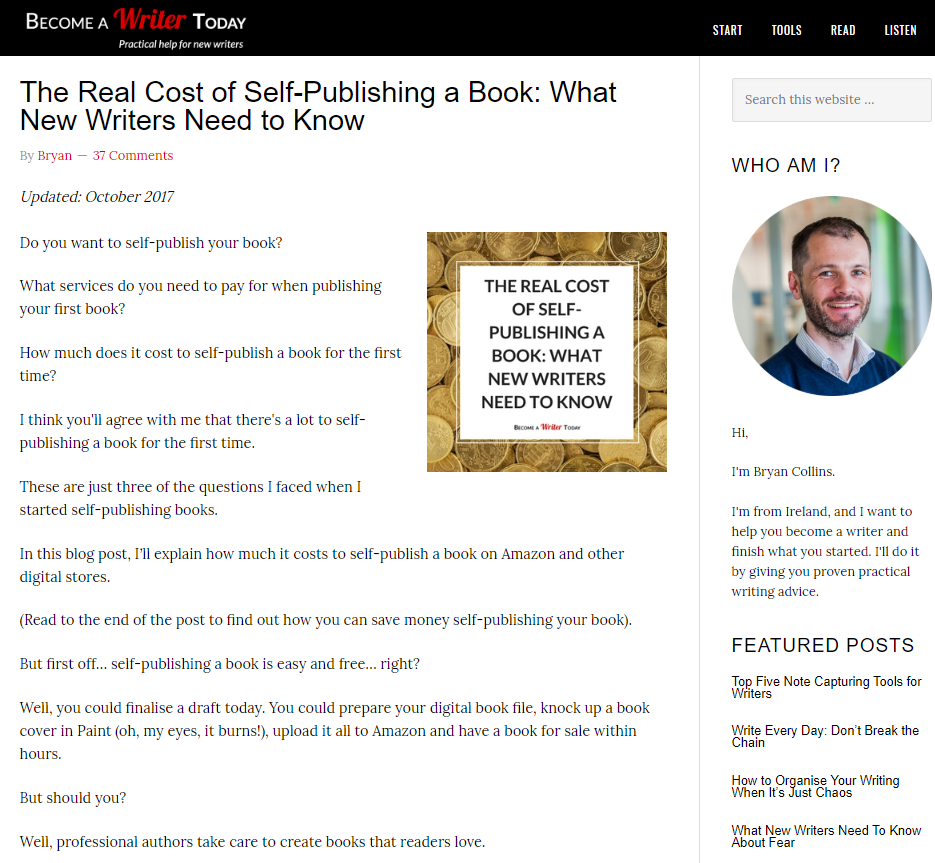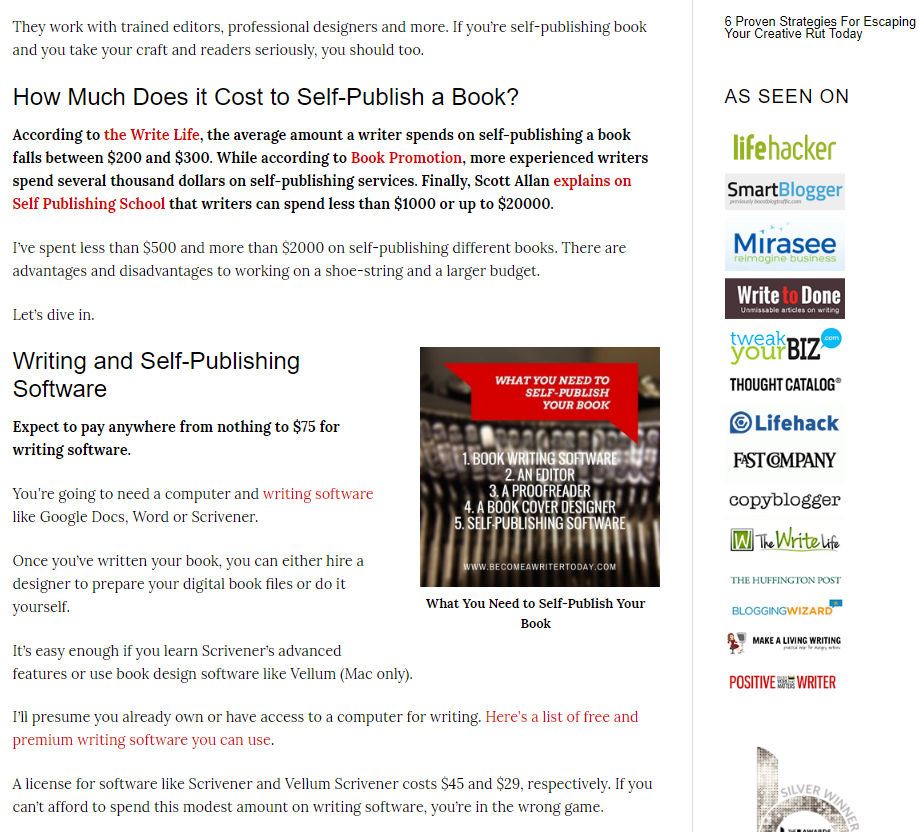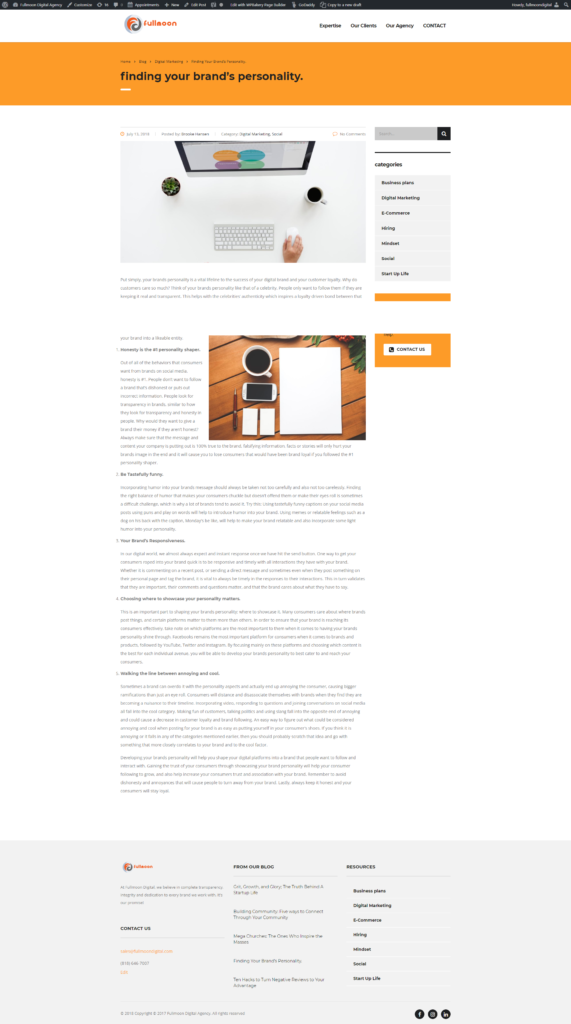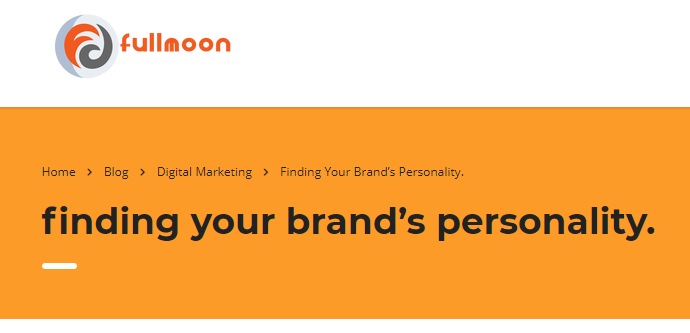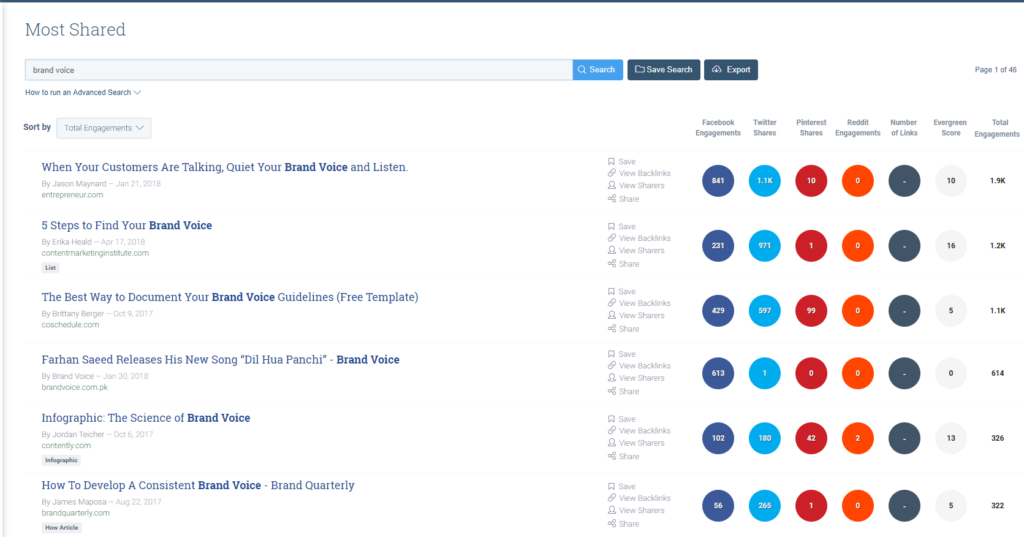It’s funny when I meet with clients who are leveraging content marketing, they frequently bring up one of two things…
Either they don’t have time to produce consistent content
OR
They have a difficult time getting their content to gain traction, and higher visibility in search engines.
Now, if you’re thinking that it must be easy to increase traffic if a site has a ton of articles, videos, images, etc…you’d be surprised how mistaken you are. There are millions of blogs and tens of millions of content pieces on the Internet; don’t underestimate the competition.
But since there are companies ranking in search engines, there must be a way to make it work.
Because of the work we do as an ad agency, we help many brands with their content strategy. We get to peek under the hood and dig in. And of the ones who do it consistently, many aren’t able to gain traffic traction from their efforts.
Just to be clear. Content marketing is not broken. It’s that most companies don’t fully pay enough attention to understand how to leverage it.
How important is content marketing for your business
Content is by far one of the most important aspect of your marketing strategy. Whether it’s SEO, PPC, Social Media Marketing, Inbound or Outbound; you need content and lots of quality in the form of video, written, images, and audio.
Every search platform today pays close attention to quality content their searches look for. If your content drives high engagement, you will see a healthy increase in traffic – because of higher rankings in the search results.
You see, search engines reward you with higher visibility if you deliver what their searches are looking for. It’s a win-win-win.
Content marketing is growing and it’s here to stay.
Building your blog content
According to Statista.com, over 28 million blogs exist in the United States, representing about 10% of the entire U.S. population. I can’t say how many blogs are active or producing quality content. But 28,000,000 is a big number.
And the growth in the blogger population doesn’t seem to be slowing down. As more industries mature, businesses will start to participate more in content creation and marketing.
WordPress commands 30% of the blog market share and have been growing steadily since 2011. Ant number appears to be growing steadily year over year.
Let’s say every 3 out of 10 businesses run their blog on WordPress platform.
That’s serious competition no matter what industry you are in.
When you land on a blog article that ranks high in Google, it’s because that article is relevant for the product or service or topic you’re searching for.
When you do a search in Google for the term “self publishing a book,” which happens to be something I’m really looking into, you’ll see a search results page like this:
I chose to click on the Become a Writer Today URL.
And Bryan’s page looks like this (screenshot):
When I land on the site, the content resonates with me and puts me in the mood to learn more about how to publish a book.
So Does That Mean Your Blog Needs Improvement
A structured and optimized blog is amazing, and it works very well for driving more traffic to your website. It doesn’t produce as many conversions as paid advertising, but the purpose is to build massive traffic over time without spending too much money.
Every blog can be improved. There’s always something you can fix or make it better.
Whether it’s structural, relevance, or technical. You should be thinking about everything that can help you achieve the first thing…traffic.
If you’re not leveraging paid ads, other than your occasional social boost, then your blog is your primary driver of traffic and leads.
Full disclaimer: Our own blog needs a lot of work. I will walk you through the steps we’re taking so you can apply it to your own.
It’s on WordPress, so the rest of this article will bias towards this platform.
Over the past few months, we’ve been putting out content. In reviewing the blog, I’m not happy with it. As I review our own ad agency blog in this article, I will also open the hood and hold nothing back on what we’re doing improve our visibility.
So How Should You Focus On Your Blog
The first part is structure. Every good blog has SEO in mind.
Plugins like Yoast has made it very easy to implement basic SEO on any WordPress blog, check it out here -> Yoast.
To install the plugin, simply type “yoast” into the search box of your WordPress plugin page and click “Install Now.”
Once the install is complete, you will see a section underneath each blog post like this:
I won’t go too deep into using Yoast. It’s easy to use once you play with it a couple of times.
But the Analysis part is where you should pay attention to. The Problems and Improvements are areas that can help your content’s visibility in the long-game.
There’s no guarantee you will dominate the search results, but think about it this way. It’s tedious, and chances are, your competitor doesn’t have the time, patience, or know-how to manage these either. So all you need is to do it better than your next competitor.
Your competitor’s complacency is your #1 advantage.
To the right of your blog posts dashboard, you will see icons like this for each post:
The first icon shows the number of internal links. The second icon is your blog’s SEO score, and their third icon is the Readability score. Ideally, you want the SEO and Readability circles to be green.
As you can see, our own blog fails in every area.
In a way it sucks for us. But it allowed me to write this article and more importantly offer you an inside look into how to make improvements. Hopefully that will help you as well.
While this is written for blogs on WordPress, but the concepts can apply to any blog platform you’re using.
So what do we need to change with our content?
Make sure every content you produce meets the highest standards, whatever it is for you.
But in general, make sure you’re covering the basic criteria from the SEO and relevance to structure and images. Everything must be aligned to deliver the best material to your readers. There’s no room for compromise. Never. Period.
Let’s dive in.
I will dissect this article on brand personality that was written in July 2018.
1. Content Length 1,900 – 3,000 words – Google loves content that are in-depth and relevant. And depending on the industry you are in, sometimes you’ll need to push closer towards the upper limits. Some might say you could get away with content under 1,000 words.
That’s what I thought at first. Then I had a realization. Why on earth should anyone ever produce content under 1,000 words. Forget the cliche of “less is more” when it comes to your content. It’s entirely about relevance and value.
So many of our own blog articles are under 1,000 words. And this one is no exception.
When I read this article, I felt sick to my stomach because I’m not getting any value out of it and embarrassed to even have it on our blog. This was entirely my fault, since I was gave our writers that instructions without thinking strategically about it. But we’re going to fix it!
This is the blog page:
It’s only 872 words. It’s well below the ideal word count. What this indicates to me is that the article is extremely thin and probably won’t provide much actionable insights to engage with my reader.
2. Better structure and layout – This article is lacking the basic structure, which are Introduction, Body, and Conclusion. There’s a lack of consistency in our structure. If I put 5 articles side-by-side, and I have, all of them look like they’re written from different agencies. It’s that disorganized and unstructured.
During my revision process, I will be going through each post and making sure they following a refined structure that adds more clarity, cohesiveness, and actionable steps.
There is no conclusion in this article. And even worse, I’m not even sure if there’s a strong opening paragraph.
3. Conversational – This article doesn’t spark a conversation with the reader. If anything, it is speaking at the reader instead of to the reader. Everyone knows that a great article pulls in the reader and resonates at a personal level.
That’s what all novels do. They invite you, the reader, into the story. Think about your favorite articles or books; and I certain that’s how it made you feel and why you can’t put it down.
This article is about building brand personality. But we reference some obscure idea comparing brands to stars. I get it, stars are unique. But drawing cosmic similarities like this just doesn’t interest me, and I wouldn’t expect it to WOW our readers either.
I see many blogs have content that seem out of context. You can improve your content significantly, if you are willing to put the time into re-reading and rewriting so it aligns better with what your audience are searching for.
Writing is just like talking to a friend; the difference is you are typing it out instead of speaking it.
So, if I’m talking to a friend about building his brand, I would never say something like this:
I should be showing examples of HOW he can build his brand. Examples of what responsiveness looks like will make more sense than a drawn out sentence about what to do.
We live in a visual world dominated by social content from Instagram and Facebook to Image search. You and I are visual beings when it comes to learning. Especially when our appetite for instant gratification grows stronger, we want to SEE how to make things work more than anything else.
4. Better Subheadings – Solid subheadings make it easy for your readers to skim through your content. If they’re scrolling down the page, a strong subheading will capture their attention and make them pause and read.
Using subheadings to describe each section of your content is helpful for your readers; include relevant keywords wouldn’t hurt either.
Truthfully, none of the subheadings in this article will make anyone stop to read. It’s dry and doesn’t tell me what to expect in the sub-sections.
Here are the subheadings in this article with an alternative revision:
1. Honesty is the #1 personality shaper.
Revision: Thrive or die by honesty.
2. Be Tastefully funny.
Revision: How to incorporate humor into your brand’s voice
3. Your Brand’s Responsiveness.
Revision: Prioritize communication with your customers.
4. Choosing where to showcase your personality matters.
Revision: Choose the right platform to dominate.
5. Walking the line between annoying and cool.
Revision: So how do I make my brand cool?
Keep in mind that these revisions need to give your readers a glimpse into the subsection content. Don’t try to be overly fancy and confuse your audience.
Be concise and straight forward. That’s usually the best approach to subheadings.
5. Images – The entire article contains two images. We’re alienating a big portion of our readers who are visual learners.
I would say we missed the boat on this one, and along with all our other articles, where images were not used appropriately and strategically to add value.
As a rule of thumb, I plan on adding helpful images where it make sense, for every 200-300 words.
And because I need to make sure the text and image is cohesive, I will improve the copy and rewrite it with the readers in mind. It’s a win-win as I revisit these content marketing requirements.
Examples must be tangible and relevant. Providing actionable steps will be important and required.
As you can see from the screenshot above, not only there are only two images in the entire article, the image selection makes no sense either.
There is no connection between the subheading “Honesty is the #1 personality shaper” to the stationary image and a coffee cup. If I’m trying to convey personality, the image is definitely the antithesis of that.
Again, here the image failed to serve as a visual complement to the content.
6. Writing amazing headlines – 20% people usually click through and read an article, on average. But our percentage is exponentially lower than the average.
The headline of this article isn’t the most interesting choice.
To come up with headline ideas, I turn to Buzzsumo. By far, this is the easiest way to generate ideas from what’s hot and trending.
I simply insert my keyword phrase and it will return a list of articles that are popular and related to the keyword, as you can see in bold.
Finding Your Brand’s Personality isn’t quite as interesting and captivating as “5 Steps to Find Your Brand Voice,” which is more actionable. My title is vague and doesn’t give my readers a clear direction.
So, I could change it.
Something like “Listen To Your Customers to Find Your Brand’s Voice” will be more appealing. Why?
First, a headline like this informs my target audience that, in order to find your brands’ voice, you need to listen.
And second, if you read this article, I can show you how to listen, and use that information to shape your brand’s voice.
I am ready to improve my content
Assuming I passed all of the checkpoints, it’s time to re-publish my content and generate some traffic.
Now that I have some baseline structure in place, it’s time for me to rewrite blog posts. I have to keep in mind my content has to be better than the competition. If it isn’t better than what they have, it will be hard for me to get social shares or improve my search visibility.
As I rewrite the articles, I will be focusing on details. I will be asking myself these questions:
1. Will I be embarrassed to share this with my friends, peers, co-workers, boss?
2. Would I read this if someone else wrote it? If not, I have to fix it.
3. What’s so unique about my post that people need to read it.
4. Does my post provide more value and actionable steps than the next post?
5. Is my headline captivating? Will I click through? If not, I must fix it.
Conclusion
I am playing in the long game of content marketing. I may not see traffic increase for months, and leads may take up to 12 months or more before they start coming in.
But these updates and approach to content will be more aligned for my target audience.
Once I’ve got the rewriting down, I’ll start cranking out fresh content, promoting it and building a community.
It’s going to take a while going back to review and update all our content. But it’s going to be a great exercise and commitment to improve our content strategy and quality.
If you’re not producing the right content, you need to invest time to review how you’re approaching content marketing. Make it part of your marketing strategy. Content should never be an after thought. Make it your part of your business’ DNA.
Do you see why content marketing is worth the time investment?
So, what are you waiting for… are you going to implement what you just learned and join me in this journey of supercharging your content marketing?

